1. Energy, not time is our most precious resource
1.1. The 4 principles
1.1.1. 4 separate sources of Energy
1.1.1.1. Physical
1.1.1.2. Emotional
1.1.1.3. Mental
1.1.1.4. Spiritual
1.1.1.5. Changes in any 1 affect all
1.1.2. Balance of Expenditure and Renewal
1.1.2.1. Energy diminishes with both over and underuse
1.1.2.2. We need to pulse
1.1.3. Beyond Comfort Zone
1.1.3.1. In order to grow and build capacity we must push beyond our normal limits
1.1.3.2. Like Athletes or body building
1.1.4. Rituals are the Key
1.1.4.1. Highly Specific Routines
2. Pulse of High Performance
2.1. SPRINTER not Marathoner
2.2. Oscillation
2.2.1. We go between spending and renewing energy
2.2.2. Opposite of oscillation is linearity
2.2.2.1. Too much expenditure without renewal
2.2.2.2. Too much recovery without sufficient energy expenditure
2.3. Balancing stress and recovery is critical to high performance
2.4. Need healthy oscillatory rhythms for all 4 energes
2.5. How do we build Emotional, Mental, Spiritual capacity
2.5.1. Just like we build physical capacity
2.5.2. Systematically exposing ourselves to stress beyond our limits
2.5.3. Followed by adequate recovery
2.6. In order to build capacity, we must be willing to endure short term discomfort in the service of long term rewards
3. Training System
3.1. Defining Purpose
3.1.1. When we lack a strong sense of purpose we are easily buffetted by life's inevitable storms
3.1.2. Positive purpose is stronger than negative
3.1.3. Intrinsic purpose is stronger than Extrinsic
3.1.4. The most powerful purpose is purpose beyond oneself
3.1.5. Vision statement
3.1.5.1. Declaration of intent as how to invest one's energy
3.1.5.2. Must be built upon your values
3.1.6. Values
3.1.6.1. We must identify our most fundamental values
3.1.6.2. Our Virtues are values in action
3.1.6.2.1. To be meaningful, valuesmust translate to daily action
3.1.6.2.2. Sometimes we have to resist instant gratification and make sacrifices
3.1.6.3. Identifying values
3.1.6.3.1. Who are you at your best
3.1.6.3.2. Think of someone you deeply respect
3.1.6.3.3. Jumping ahead to end of your life
3.1.6.3.4. What is the statement on your tombstone
3.2. Facing the Truth
3.2.1. How are you managing your energy right now
3.2.2. What we fail to acknowledge to ourselves we often continue to act out unconsciously
3.2.3. A common Self deception
3.2.3.1. Assuming that our view of the world is the truth
3.2.4. We have to have the courage to be able to constantly evaluate the truth we believe in
3.2.4.1. And discard it when it has run it's course
3.2.5. No virtue is a virtue by itself
3.2.5.1. Honesty -> Cruelty
3.2.5.2. Courage -> Foolhardiness
3.3. Positive Rituals
3.3.1. All great performers rely on positive rituals to manage their energy
3.3.2. Conscious will and discipline are very limited
3.3.2.1. They draw on the same well of self control
3.3.3. We must offset our limited will and self discipline by building rituals around the most important behaviours
3.3.4. The more exacting a challenge and greater the pressure
3.3.4.1. The more rigorous our rituals need to be
3.3.5. Keys to building rituals
3.3.5.1. Specificity of steps
3.3.5.2. Doing them at the same time every day
3.3.5.3. One at a time
3.3.6. Serial Rituals
3.3.6.1. Dont try to create too many rituals at a time
3.3.6.2. One powerful ritual at a time
3.3.7. Rituals of stress and recovery in sports
4. 4 sources of Energy
4.1. Physical Energy
4.1.1. It is the fundamental fuel
4.1.2. Ways to manage
4.1.2.1. Eating
4.1.2.1.1. 5-6 low glycemic index meals
4.1.2.2. Sleeping
4.1.2.2.1. 7-8 hours every day
4.1.2.3. Breathing
4.1.2.3.1. Deep breaths followed by elongated exhales
4.1.2.4. Exercising
4.1.2.4.1. Interval and strength training
4.2. Emotional Energy
4.2.1. We must access pleasant and positive emotions to perform at our very best
4.2.2. Key muscles fueling it
4.2.2.1. Self confidence
4.2.2.2. Self control
4.2.2.3. Empathy
4.2.3. Negative Emotions are useful for survival but not good for high performance
4.2.4. Create a balance between exercising the emotional muscles and seeking recovery
4.2.5. Recovery source
4.2.5.1. Any activity that is enjoyable, fulfilling and affirming
4.2.5.2. Yes
4.2.5.2.1. Family Time
4.2.5.2.2. Music
4.2.5.2.3. Creative expression
4.2.5.3. No
4.2.5.3.1. TV
4.3. Mental Energy
4.3.1. Mental Energy we most need
4.3.1.1. Realistic Optimism
4.3.2. Supporting mental muscles
4.3.2.1. Visualization
4.3.2.2. Positive Self talk
4.3.2.3. Creativity
4.3.3. Physical Exercise boosts cognitive capacity
4.3.4. Balance between expending and recovering mental energy
4.3.5. Challenge the brain to grow it
4.3.6. Changing channels mentally allows for renewal and creativity
4.3.6.1. Left brain
4.3.6.2. Right brain
4.4. Spiritual Energy
4.4.1. Not relgious
4.4.2. Purpose driven
4.4.2.1. Provides Passion
4.4.2.2. Perseverance
4.4.2.3. Commitment
4.4.3. We get it from a connection to
4.4.3.1. Our deeply held values
4.4.3.2. purpose beyond self interest
4.4.4. Key muscles = Character
4.4.4.1. Character = the courage and conviction to live by our deepest values
4.4.4.2. Supporting muscles
4.4.5. Sustaining it
4.4.5.1. Balancing a commitment to a purpose beyond ourselves
4.4.5.2. It can be demanding and renewing at the same time
4.4.6. The human spirit can override even sever limitations of the physical world
